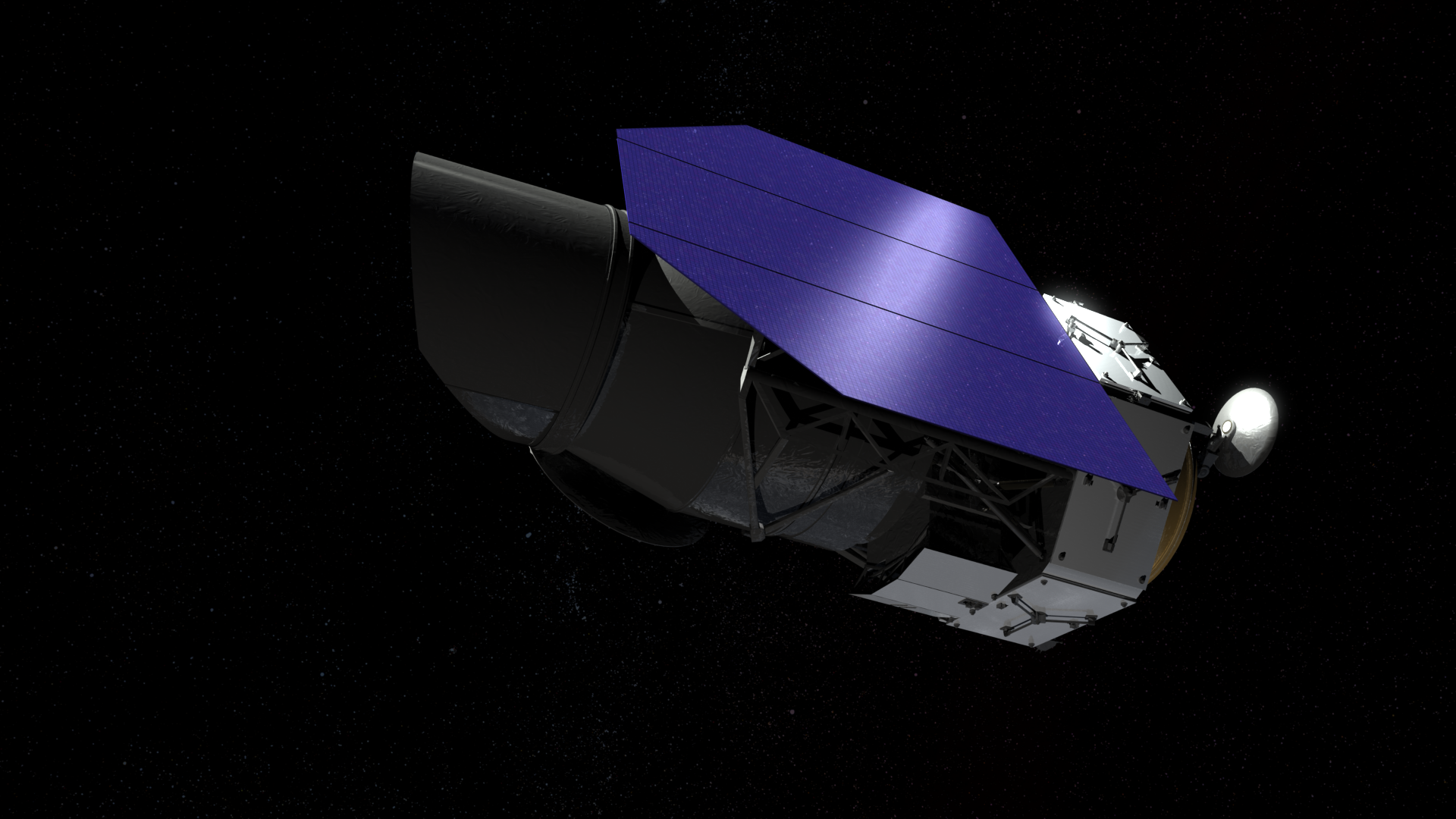WFIRST: The Best of Both Worlds
With a view 100 times bigger than that of NASA’s Hubble Space Telescope, the Wide Field Infrared Survey Telescope WFIRST will aid researchers in their efforts to unravel the secrets of dark energy and dark matter, and explore the evolution of the cosmos. It also will discover new worlds outside our solar system and advance the search for worlds that could be suitable for life. Scientists participating in the mission discuss the spacecraft, the science, and its potential. Slated to launch in the mid-2020s, the observatory will operate at a gravitational balance point known as Earth-sun L2, which is located about 930,000 miles from Earth and directly opposite the sun.
Watch this video on the NASA Goddard YouTube channel.
Complete transcript available.
NASA officially is beginning work on an astrophysics mission designed to help unlock the secrets of the universe -- the Wide Field Infrared Survey Telescope (WFIRST).
With a view 100 times bigger than that of NASA’s Hubble Space Telescope, the Wide Field Infrared Survey Telescope WFIRST will aid researchers in their efforts to unravel the secrets of dark energy and dark matter, and explore the evolution of the cosmos. It also will discover new worlds outside our solar system and advance the search for worlds that could be suitable for life.
WFIRST is the agency's next major astrophysics observatory, following the launch of the James Webb Space Telescope in 2018. The observatory will survey large regions of the sky in near-infrared light to answer fundamental questions about the structure and evolution of the universe, and expand our knowledge of planets beyond our solar system – known as exoplanets.
It will carry a Wide Field Instrument for surveys, and a Coronagraph Instrument designed to block the glare of individual stars and reveal the faint light of planets orbiting around them. By blocking the light of the host star, the Coronagraph Instrument will enable detailed measurements of the chemical makeup of planetary atmospheres. Comparing these data across many worlds will allow scientists to better understand the origin and physics of these atmospheres, and search for chemical signs of environments suitable for life.
The telescope’s sensitivity and wide view will enable a large-scale search for exoplanets by monitoring the brightness of millions of stars in the crowded central region of our galaxy. The survey will net thousands of new exoplanets similar in size and distance from their star as those in our own solar system, complementing the work started by NASA's Kepler mission and the upcoming work of the Transiting Exoplanet Survey Satellite.
Employing multiple techniques, astronomers also will use WFIRST to track how dark energy and dark matter have affected the evolution of our universe. Dark energy is a mysterious, negative pressure that has been speeding up the expansion of the universe. Dark matter is invisible material that makes up most of the matter in our universe.
By measuring the distances of thousands of supernovae, astronomers can map in detail how cosmic expansion has increased with time. WFIRST also can precisely measure the shapes, positions and distances of millions of galaxies to track the distribution and growth of cosmic structures, including galaxy clusters and the dark matter accompanying them.
WFIRST is slated to launch in the mid-2020s. The observatory will begin operations after traveling to a gravitational balance point known as Earth-Sun L2, which is located about one million miles from Earth in a direction directly opposite the Sun.
WFIRST is managed at Goddard, with participation by the Jet Propulsion Laboratory (JPL) in Pasadena, California, the Space Telescope Science Institute in Baltimore, the Infrared Processing and Analysis Center, also in Pasadena, and a science team comprised of members from U.S. research institutions across the country.

WFIRST, shown here in an artist's rendering, will carry a Wide Field Instrument to provide astronomers with Hubble-quality images covering large swaths of the sky, enabling several studies of cosmic evolution. Its Coronagraph Instrument will directly image exoplanets similar to those in our own solar system and make detailed measurements of the chemical makeup of their atmospheres.
Credit: NASA's Goddard Space Flight Center/Conceptual Image Lab
For More Information
Credits
Please give credit for this item to:
NASA's Goddard Space Flight Center. However, individual items should be credited as indicated above.
-
Producer
- Scott Wiessinger (USRA)
-
Animators
- Chris Meaney (HTSI)
- Scott Wiessinger (USRA)
-
Editor
- Swarupa Nune (InuTeq)
-
Scientist
- Neil Gehrels (NASA/GSFC)
-
Science writer
- Francis Reddy (Syneren Technologies)
Release date
This page was originally published on Thursday, February 18, 2016.
This page was last updated on Wednesday, May 3, 2023 at 1:48 PM EDT.

